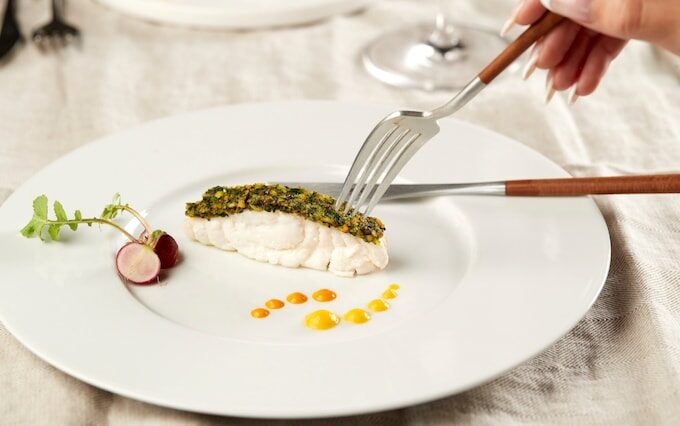
It looks like any normal fish fillet and yet it has never seen the sea.
In a world first, this grouper fillet has been created from cells grown in a lab and then 3D printed into a natural, fishy, shape.
It is the creation of Israeli deep-tech food company Steakholder Foods and Singapore's Umami Meats, who claim it has the same taste and texture of a traditionally caught fish, yet is far more sustainable.
Overfishing is a global problem, with marine experts estimating around one third of the world's fish stocks are currently overexploited or depleted. Around one quarter of the grouper fish species face extinction because of overfishing or poor management of coral reef fisheries.
Eliminates danger from toxins
The companies hope that printing fish could provide a tasty alternative that could help stocks recover, and are working towards bringing the 3D-printed fillets to supermarket shelves.
Engineering fish also eliminates the danger from toxins such as mercury, microplastics, antibiotics and hormones.
At a tasting event in Israel this week, the company said the fillet had the same texture and taste as a real fish.
Mihir Pershad, CEO of Umami Meats, said: "It flakes, tastes, and melts in your mouth exactly like excellent fish should.
"In the coming months, we intend to announce our plans for bringing this world-class cultivated fish to the market."
The fillets are created by selecting fish stem cells and multiplying them in vats containing a nourishing soup of nutrients. When the cells reach a certain number, they naturally begin to differentiate into muscle and fat cells.
The cells are then used to create bio-inks which can be fed into a printer and printed into structures that mimic the shape and texture of real fish.
Printing a fillet takes just a few minutes and unlike 3D-printed meat cuts, which require incubation and maturation for several weeks after printing, the fish is ready to cook immediately.
Many companies are working on synthetic meat and seafood, as an alternative to industrialised farming and fishing.
'Faux-fish' market is growing
Last year, the Israeli start-up Plantish announced the creation of the world's first 3D-printed vegan-friendly fish steak made entirely from plants.
The boneless prototype fillets are made by reverse engineering an actual salmon to discover the balance of components - such as protein, fat, water, omega 3 and 6 - before swapping them for plant alternatives.
The "faux-fish" market is also growing, with Tesco launching a range of plant-based fish and crab cakes, while the Dutch brand Vegan Zeastar already has smoked salmon alternative called "Zalmon" made entirely from tapioca starch, as well as "Shrimpz" and "Kalamariz".
Nestle also recently launched "Vrimp" - a shrimp alternative made from seaweed and peas.
Steakholder, whose slogan is "Devour a good steak. Not the planet" are also working to bio-engineer whole cuts of meat.
The company has printed the largest real steak made from animals cells and says that 3D-printed steaks could allow cuts to be healthier, by including extra iron or protein and cutting down on fat and harmful additives.
Steakholder and Umami are now collaborating on the development of 3D-printed cultivated eel.
Arik Kaufman, CEO of Steakholder Foods, said: "We're excited to be working with Umami Meats to develop 3D-printed structured fish products that have the same great taste and texture as traditionally caught fish, without harming the environment."



Comment: Man will never be able to artificially recreate a food source in its full nutritional value. There is too much still unknown about the human body's requirements. One has to wonder why this line of research is being pushed so strongly. There's more to it than just the profit motive.